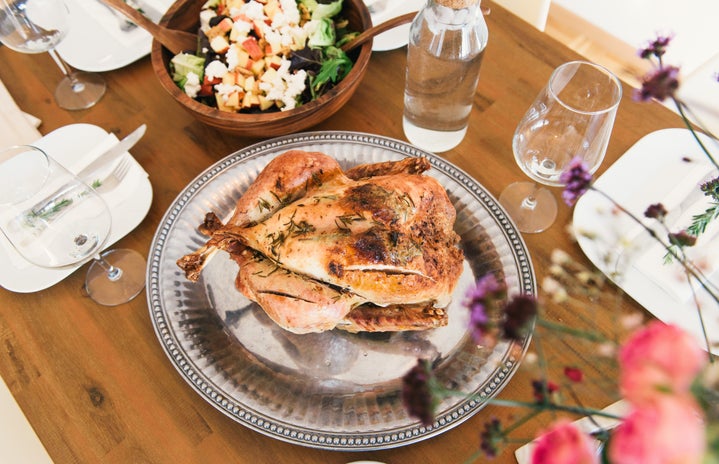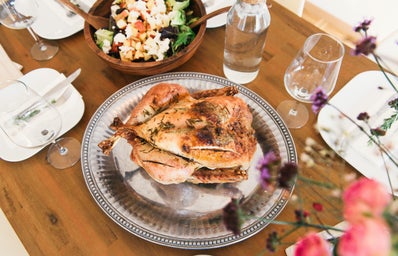America is definitely known for it’s comercialization of holidays, and it’s lack of historical acknowledgement. Here’s the breakdown on your favorite holidays that we celebrate nationwide in the good ole US of A.
1) Groundhog Day – February 2nd
When we’re kids, we’re taught that somewhere a groundhog will pop out of it’s hole in the ground and if he stays out, it’s Spring. If he sees his shadow, it’s six more weeks of winter. Well, it actually doesn’t work like that at all. This is probably one of our silliest, most outdated holidays as a nation. Firstly, Groundhog Day does not have a single, mystical groundhog. There are multiple groundhogs located across the nation (Newport News, VA; Lilburn, GA; Punxsutawney, PA; etc.). And they don’t determine the season, they predict it. So in theory, you’ll have more groundhogs predict it is spring than those that predict it is winter, and we will assume that spring has arrived.
I don’t think I have to go into detail to explain why this is a terribly dumb holiday, especially with the strange weather patterns we have been having and lack of a belief in “magic”. Interesting enough, though, some places even host festivals to celebrate the holiday. In Punxsutawney, PA, they host a festival in which the participants are only allowed to speak a Pensyvanian German Dialect, and if they slip up and speak English they have to pay a small fine like a nickel or a dime. These festivals are often focused on the historical roots and context of the holiday as opposed to the idea of predicting the weather, though.
2) Valentine’s Day – February 14th
The day of love and chocolate came from more sentimental beginnings, often tied with St. Valentine. In America, we use this day to give our significant others some kind of present/gesture that shows our love for them. Or if you’re me, your mom will buy you a card that sings to you and some chocolate and you’ll pig out in your woman-cave. #Winning
The holiday first began as a day set aside by the church to recognize all of the martyrs whose names were Valentine, including the more popular St. Valentine. Slowly it began to evolve into a holiday celebrating love, friendship, and steadfast affection to God. In certain embelleshments of the legend of St. Valentine, it is said that he married couples who were not allowed to marry for various reasons, and that when he died there was a pink blossom tree planted at his grave to symbolize everlasting affection and friendship. St. Valentine is said to have worn a purple ring with an image of cupid engraved into it, which soliders and persecuted Christians would see and would ask him to marry them to their lovers. This explains why amethyst is associated with the month of February, and where the image of Cupid came from.
While gift giving has always been associated with the romantic aspects of this holiday throughout history, it’s become much more commercialized and expensive in more recent years. In America, the average person spends about 131 dollars on one gift for their signficant other every Valentine’s Day. Average.
In history, people used to give their lovers keys to signify the “key of their heart”, that only their other half could unlock. They also gived heart shaped valentine cards in rememberance of the cards St. Valentine would give people to remember God and their love for him. They would give other small treats and gestures as well, like flowers and confectionaries, but on no grand scale. The point of the holiday was to let your signficant other know that they’re your other half, that you adore them but in a more private and intimate manner.
3) St Patrick’s Day – March 17th
We wear green on this day, and if we don’t we get pinched. There’s also a significant amount of shamrock decorations. That’s the extent of St. Patrick’s Day right? WRONG.
The holiday came from the death of Irish saint, Saint Patrick, who was said to have converted several Irish Pagans to Christianity. His death is celebrated by the church, but the holiday truly gained wind outside of Ireland. Festivals of celebration began in North America before Ireland was involved, and the past several decades have involved several movements of trying to include more historically accurate Irish traditions into the festival instead of the poor representations of North Americans.
Drinking has been wildly associated with the holiday, and in Ireland “drowning the shamrock” is a popular tradition. You place a shamrock at the bottom of a cup, and then procceed to fill the cup with beer or irish whiskey. The Shamrock comes from St. Patrick’s usage of it to explain the Holy Trinity to the Irish pagans. Overall, the holiday is meant as a day of celebration, feasts, and festivities for the great St and the great country of Ireland. It’s a party!
4) Mother’s Day – Varying Dates
This holiday came from The United States, and only began in 1908! Anna Jarvis, a young woman from West Virginia, decided to memorialize her mother who had passed through the holiday. Her mother was a known activitst during the Civil War, nursing soliders from both sides and advocating for peace. The holiday was used by her daughter to bring to light public health issues. As the States turned the observance of mothers who deserve so much love into a commercialized hallmark extravaganza, Anna Jarvis would frequently boycott things involving Mother’s Day, and was arrested once for disturbing the peace during a protest. The holiday may have become something she didn’t want, but the sentiment is still seen today, as people nationwide take time to show their mothers just how special they are to them, just in a flashier manner than Jarvis had wanted.
5) Father’s Day – Varying Dates
Father’s Day did not begin to spread until after the establishment of Mother’s Day. However, the idea of celebrating fathers dates back to the Middle Ages. Catholics in Europe used to designate a day to celebrate paternity, and Saint Joseph, who is considered the “putative father of Jesus”. However, the holiday that is traditionally celebrated in the States is much different, and designed to be more of a copycat of Mother’s Day. Woodrow Wilson eventually passed the bill stating that Father’s Day would be observed, since Mother’s Day didn’t seem to be going anywhere anytime soon.
6) Independence Day – July 4th
Anyone can tell you what The Fourth of July means for The United States. It’s the day we signed our independence from Britain, our birthday if you will. We normally celebrate this day with barbecues, fireworks, drinking, and family reuinions. We light fireworks to show our grandeur, and host celebrations to enjoy the freedom our country has given us. However, this holiday holds a lot of weight to it for those who can no longer tell the stories of before we were The United States. Countless men, women, and children died for the cause of independence. Our entire government was restructured by the tireless efforts of our founding fathers, and we essentially had to build a nation from the ground up. This independence was not easily kept, either. We’ve gone through a Civil War, numerous political and social battles within our boarders, and worked for hundreds of years to cultivate “The American Dream” with trial and error. This day is the day that we celebrate all the hard work we have put into this country as citizens, as involved members of the community, as Americans.
Also, fun fact, we signed the Declaration of Independence on July 2nd, not July 4th.
7) Labor Day – Varying Dates
Most of us see this day as the day before school starts, the weekend where all of our favorite clothes are on sale, or the unofficial end of Summer. However, this holiday was not intended to be a last hurrah of the year, or a negative date at all. This day was created to celebrate hardworking Americans by the various labor unions and movements picking up speed during the late 19th century. In the first proposal, which is said to have been proposed by Peter McGuire of the American Federation of Labor, it is outlined what celebrations would take place during this tentative national holiday. It says that a street parade would take place, celebrating the trade and union organizations established at that time, followed by a festival for the friends and family members of workers everywhere. This holiday is still recognized, and often celebrated by individuals nationwide, but moreso as a day of rest for the population rather than a day to acknowledge hard working Americans who toil in factories, fields, and other god-awful but necessary career paths.
8) Halloween – October 31st
Why do we dress up in costumes and go to doors asking for a treat or a trick? Well, there’s a reason.
Halloween comes from All Hallows Eve, which has many different roots but most of them come from pagan festivals celebrating the departed. Not surprisingly, the word “Halloween” comes from Christian roots that date back to 1745. The Christian aspect comes from their celebration of All Hallows Day, which is November 1st and celebrates the dead saints and martyrs of Christianity. It was brought over to North America during early colonization, and quickly spread across the continent once the Irish and Scottish arrived.
It was believed in old folklore regarding the holiday that Halloween was a time in which the veil between the dead and the living was at it’s thinnest. To appease these spirits, people had items like crops (AKA Pumpkins) and other trinkets placed outside before nightfall. This would give them protection. Some people also welcomed spirits into their home for the night, lighting candles and having dinner places prepared for loved ones they thought would return to them for the one night. Apple bobbing and bonfires are examples of things used for premonition games that people in Ireland and Britain would play during the holiday in order to see their future (or try to at least).
From the Christian point of view, All Hallows Eve connected them to the spirit world but in a much more negative way. The day was used to mourn, and people gave each other “soul cakes,” which is theoretically where trick-or-treating originated. Those who were dressed up were hiding from spirits that could potentially want to enact vengence on them for some reason during this one day in which the veil between worlds was lifted.
So essentially this entire holiday is to appease spirits and hide from those who would like to hurt you from the great beyond, all while collecting candy that was normally reserved for those in mourning. The more you know.
9) Thanksgiving – Varying Dates
This was bound to be a dark holiday, as anything involving colonial times is.
What many history books teach us as young kids is that the “First Thanksgiving” was when the Pilgrims and the Native Americans held a feast together, sharing crops and thanking God for surviving the tough journey that had passed. It was considered a time of peace, thankfulness, and blessings. They celebrated for three days.
And then we proceeded to nearly wipe out all of the Native Americans, take their land, force them onto the Trail of Tears, and slowly take what was theirs for our own gain and for the King of England. We gave thanks for friendship, and then we decided to be greedy bastards. And that is what Thanksgiving comes from.
10) Christmas – December 25th
Tis the season!
Why do we give gifts? Why do we have a strange tree placed in the middle of our living room?
Thank the Christians and the Pagans yet again.
Christians began celebrating Christmas as Jesus’ birthday. Some of the infuences of the Nativity scene are seen in the gift giving done by the three wise men, and the family gathering insued. However, many Americanized Christmas traditions come from the pagan festivities and our own commercialization. The tree came from pagan roots, as well as Yule songs, and other decor involved with the holiday. The first recorded photograph of what we now refer to as Santa Claus actually came from Coca-Cola, believe it or not. The story comes from that of Saint Nick, which has minimal to do with the holiday itself and more of the emphasis on gift giving (moreso getting). Now the holiday is seen as a time to feast, a time to enjoy the holidays, and a time to get and give presents to loved ones. This holiday is probably the most Americanized one from the list, even in comparison to those that FORMED in America. It stands for the things we have idolized in recent years as a nation. Those things being food, money, and free time.
And that’s your breakdown of all of your favorite holidays~


